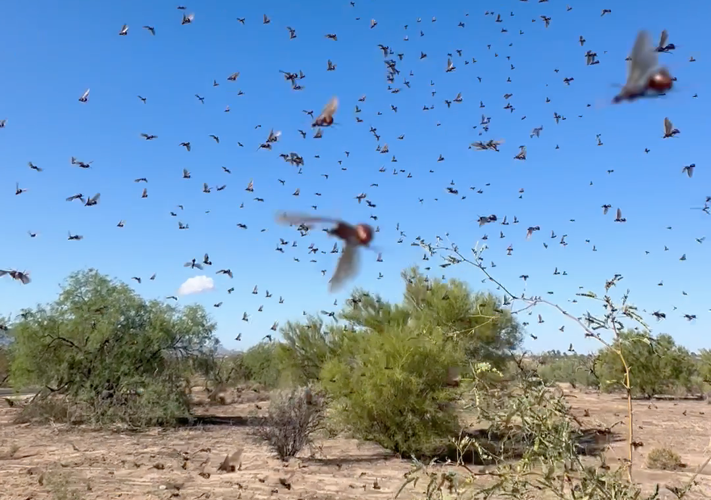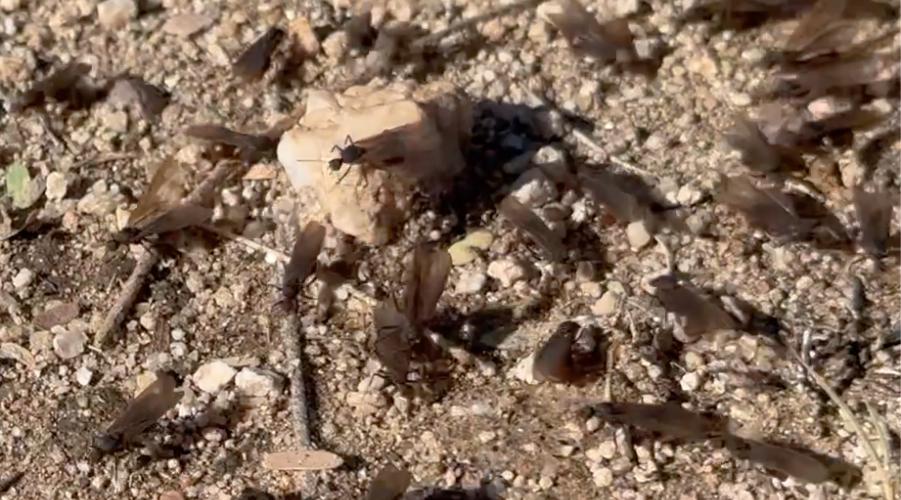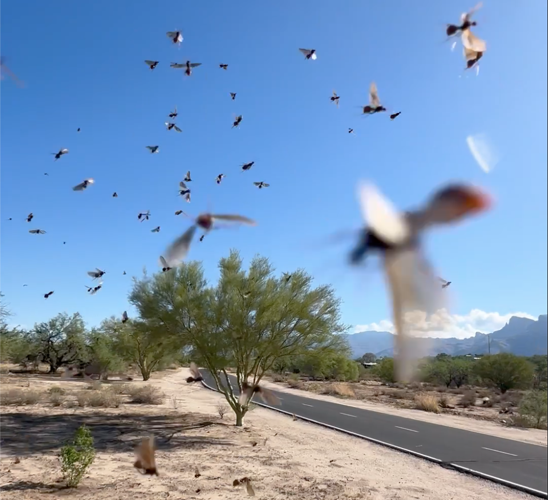°ŐłÜł¦˛ő´Ç˛Ô’s recent rainy spell wasn’t just exciting for us humans.
All that welcome moisture also sent clouds of freshly hatched ants into the air with wings on their backs and one thing on their minds.
It’s called a “mating swarm,” and it’s exactly what it sounds like, according to , a professor of ecology and evolutionary biology at the University of Arizona.

Flying ants swirl as part of a mating swarm after a recent rainstorm in northwest Tucson.
After a sufficient amount of rain in late summer or early fall, winged males, born for breeding, will emerge from their underground colonies to meet and mate with prospective queens.
These airborne insect orgies unfold in dense, swirling columns containing hundreds or thousands of individuals.
People are also reading…
“You’ll be walking your dog or something, and all of the sudden you have all these ants in your face,” Dornhaus said. “In German, it’s actually called a wedding flight, poetically.”
And as soon as it’s over, the females will land on the ground, chew off their own wings and burrow down into the dirt to start a new colony.

Ants cluster on the ground as part of a mating swarm that the insects use to establish new colonies.
The reason they wait for monsoon season to do all this should be obvious to anyone who has ever tried to sink a shovel into hard, desert dirt. It’s much easier to dig when the ground is wet, said Dornhaus, whose at the U of A uses ants and bees to learn more about complex social structures, biological networks and engineered systems in the insect world and beyond.
Arizona is home to an incredible amount of ant diversity, with more than 350 different species, and this method of colony expansion is pretty common across the board, she said.
It typically begins before monsoon season, when an established queen will begin laying special eggs containing the winged males and females needed for the mating swarms.
Then comes the rain, and out they fly, Dornhaus said. “We don’t know how they know where to meet.”
For each new queen, the wedding flight will be her only flight. Once she gets her colony started, she “never leaves the house again,” Dornhaus said with a laugh. She will spend the rest of her life underground, laying eggs — perhaps for as much as a decade or two — with the sperm she collected during that single swarm.

Recent rains along the Loop trail near La Cañada Drive in Oro Valley brought out swarms of winged ants looking to mate and establish new colonies.
It’s also a one-way trip for the male flying ants. Having served their reproductive roles, they are left to fly off, collapse from exhaustion or get snapped up by eager predators, never to return to the colonies from which they hatched.
Like a lot of things in the insect world, ant expansion is a numbers game. Dornhaus said one fellow researcher estimates that as few as 1 out of every thousand females will succeed in establishing her own colony. The rest will get eaten by birds or lizards or land on a patch of pavement or hard-packed clay where digging is impossible.
The only way to guarantee success is with a giant, swirling swarm of future queens and their royal suitors.









